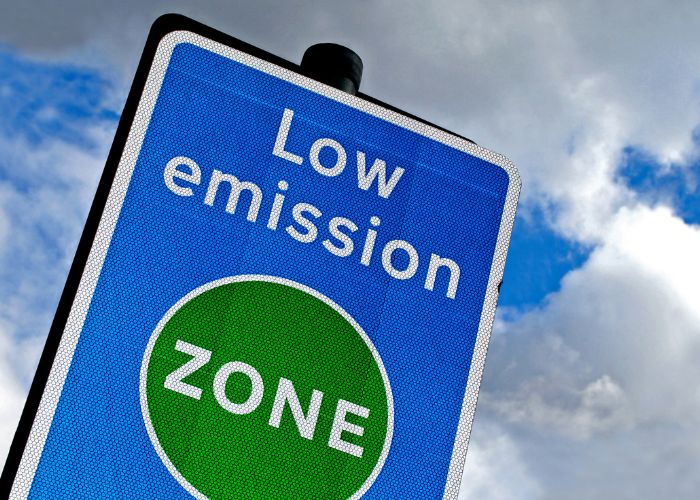With less than a week to go this year, most cities in Spain required by law to create a low emission zone (LEZ) will not meet the deadline ‘by 2023’.
The Climate Change Law established this obligation to demarcate and commission areas with traffic restrictions for all Spanish municipalities with more than 50,000 inhabitants. There are 149 in total, but only 15 of them will comply with the regulation. Most mayors do not comply with the climate law and enter 2023 without restricting traffic in the centre of the most populous cities.
Madrid and Barcelona were the pioneers, and the latest added cities Valladolid, Ávila and Castellón. Burgos, Ciudad Real, Córdoba, Melilla, Pamplona, Parla, Pontevedra, Rivas Vaciamadrid, Sevilla and Talavera de la Reina are also to establish zones where the passage of vehicles is subject to conditions to reduce pollution, already completed. Missing from the list are 37 provincial capitals with more than 50,000 inhabitants and even half of Spain’s six most populous cities.
These major cities lag behind
Valencia, Zaragoza and Malaga have still not adopted the regulation that is the final step for establishing restricted traffic zones and, like many others, are closing in on the year – and the deadline set by the law ‘before 2023’ – without a clear date to complete the process.
In Valencia, the regulation is in preparation. The mayor of Málaga, Francisco de la Torre, has already presented the project, but has not yet started the legislative process, which, as in all other cities, must go through a public consultation before final approval in the municipal plenary. In the absence of a final project, the Socialist municipal group has just tabled a motion to restrict car access and ask for a mobility plan similar to what the final project will be to try to reduce traffic congestion in the city centre.
Also read: Spain joins global alliance for 100% emission free cars
Climate legislation and EU funds
The requirement for cities with more than 50,000 inhabitants and those with lower but high pollution levels to reduce traffic in certain areas is part of the Climate Change Act and the National Integrated Energy and Climate Plan (PNIEC) adopted in May 2021. Cities should do this ‘before 2023’ and although through different avenues, cities have already been able to apply for a first call for EU recovery funds aimed at decarbonising cities.
These economic funds depend on Spain’s Ministry of Transport, Mobility and Urban Agenda. This has already applied for €1 billion for various initiatives, including the construction of low emission zones, although not only, as they are not directly related and can also be used for the purchase of electric buses, the construction of park-and-ride parking spaces or pedestrianisation.
The Spanish Federation of Municipalities and Provinces (FEMP) confirms that “all” cities that need to reduce traffic have submitted applications for European funds to be implemented within a longer period than the end of this year.
Across the country and of every ideology
Across Spain, the deadline for establishing zones with restricted traffic is missed. Mayors of all political colours are affected. The final step must be the approval in the respective municipal plenary sessions of an ordinance that contemplates the zones and the way to regulate traffic, after a technical process that requires municipal councils to tender contracts for installing panels and machines to check number plates and, if necessary, issue fines. The process also requires agreement with the municipal police.
Overall, environmental movement Ecologistas en Acción estimates that the process will take about a year and could be shortened to up to six months if mayors hurry.
Conflict with Ministry of Ecological Transition
The municipal ordinance is key to regulating and launching low-emission zones across Spain, and also an element of the controversy that has set up municipalities against the Ministry of Ecological Transition from the beginning. This is due to the widespread failure to comply with the obligation to apply them.
Mayors want royal decree
Mayors have been demanding for months that the central government specify in a royal decree the scope of the restriction on car traffic in the centre of their cities. They also argue that until that restriction is in place, they cannot move forward with their procedures and ordinances. The third vice-president and minister of Ecological Transition, Teresa Ribera, on the other hand, has maintained for as long that there will be no extensions because the mayors have already had enough time. In late October, she reminded the Spanish Federation of Municipalities and Provinces (FEMP) that there would be no extensions, that the mayors needed to “wake up”, government sources said at the time.
Deadline without penalty
A few days before the 2022 deadline, the FEMP and some mayors, such as Benidorm, asked for an extension that Ribera will not give them, while just a few weeks ago the FEMP sent the mayors a draft regulation that they can follow to develop their own. Meanwhile, the ministry washes its hands and says it does not know which cities will meet the deadline. It claims it is not up to it and limits itself to pointing out that if the cities do not meet the deadline, they will be breaking the law. According to Ecologistas en Acción, at least for now, the law does not include a penalty scheme for cities that do not comply.
Also read: Canary Islands want to be low-carbon by 2040


